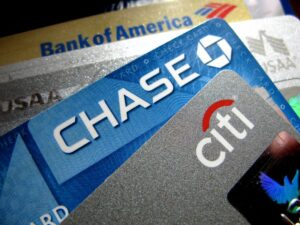Minimum Viable Product: Examples
Eric Reis in his classic The Lean Startup defines an Minimum Viable Product roughly as the smallest version of the product possible that lets you learn something substantial. Here we go over some examples.

The best MVP highlight the cleverness by which you can test learnings with minimal effort. The classic minimum viable product example is Bill Gates, who in 1975 convinced Altair to buy his BASIC compiler before he even wrote it. Here, Gates is performing a entrepreneur super-combo: spending a few hours talking to customers, which is one of the most productive things a founder can do, and convincing him to spend real cash to validate demand for new technology.
MVPs are an overused term though. For example, if you search online, you’ll find examples of Dropbox’s MVP just being a demo video. Hogwash! My friends were there when Dropbox was founded. Drew Houston was a whiz programmer who actually had the fully functional product live to demonstrate it well before substantial funding and launching. Some people will even insist that Google had an MVP. This is insane because Google was the result of a Stanford CS PhD thesis. Doing a 5-year PhD is not, is any way, minimal!
The point is, there are differences between good MVP examples and bad ones. Good minimum viable product examples illustrate how you can spend an order of magnitude less effort to get similar data than a naïve design. Bad minimum viable products are not MVPs at all: they’re just a successful product’s first iteration.
Good Minimum Viable Product Examples
- Microsoft — Selling a BASIC Compiler Before It Even Existed
Microsoft’s first real sale happened when Bill Gates saw that Altair was coming out with a microcomputer (the old name for a “desktop computer”). He guessed (hypothesized) that Altair was going to need to support the BASIC programming language, which was an important feature for desktops those days. The way that a computer like Altair supports BASIC is through a piece of software known as a compiler.
Anticipating this, Gates calls the founder of Altair, Ed Roberts, and tells Roberts that Gates has a working BASIC compiler for Altair already. Roberts immediately perked up, validating Gates’ hypothesis that the Altair needed the compiler. This illustrates that just talking to potential customers is a superpower is itself an MVP. By having a 40 minute chat, you save 40 hours of making a sales page, or God forbid, 40 weeks of making a product.
Ed Roberts then decided that the compiler was interesting enough to fly Gates out for a live demonstration. This validated to Gates that Roberts really needed a compiler. As any good manual for MVP instructs founders, you must test the valdity of the product by making the buyer give up something of value. Usually a dollar is enough, or a future meeting.
Only after Gates verified Roberts’ demand did he program the compiler. Talk about an MVP! Validate the sales first (which was risky for Gates), and the technical part later (which was less risky). - Zappos — Selling Shoes Online by Running to the Local Shoe Store
The second example, something you’ll see a lot in this list, is validating market risk before building any product. Back in 2000, buying shoes online was considered questionable. You couldn’t try it on, and had to trust a stranger with your credit card information.
Instead of building any warehouses or infrastructure for Zappos, Nick the founder simply went to shoe stores in San Francisco and took pictures of shoes. He uploaded these shoes to a site which allowed users to check out using their credit card. When users checked out, he would go to the shoes stores and buy them for delivery.
This MVP is notable mainly because it did something that didn’t scale at the beginning — which was piecemeal fulfillment. - PrepScholar — Validation in 8 hours: creating a landing page to sell online education.
PrepScholar sells online education in the SaaS model. The founders had the hypothesis that people would want to buy a fully software-lead online program for $400. The actual product would take months to a year to build.
Instead of building the software first, the founders threw up a landing page. One founder build the site in Unbouce (a landing page MVP prototyping site) within 4 hours, while the other ran Google Adwords in the morning. By the after, 3 eager parents had called on in wanting to pay immediately. It was very clear they were ready to hand over their credit card. Of course, without a product, the founder just talked to them for free for a few hours to help them with their education.
The upshot was that the need for the product was tested within one day, instead of one year.
As you can see, some commonalities of great MVPs include:
- Generally going for a pre-sale (like Gates did of the BASIC Compiler) where
- The customer gives something very close to cash or actual cash.
- The product, as-made, is fully described.
- Avoiding building the product
- Avoiding building things that scale, and servicing the product in an
Now let’s look at some examples of products that are not MVPs, even though some people commonly claim them to be:
Bad Examples
Many journalists who don’t truly understand minimum viable products give bad examples. They take minimum product examples to be any first effort by a latter successful company. That’s NOT whan an MVP is:
- Facebook
As a Harvard student, I was one of the first users of Facebook in 2005 (my facebook userid is only 5 digits long!). The original Facebook had full profiles, between-user interaction, and all the basic functionality that would take it to a billion dollar valuation.
Some people consider the fact that it was only available at Harvard and MVP. Having overseen many software development projects, I can assure you can having a restriction to one university is in no way an MVP. 90%+ of the programming effort has already been put in to one university versus a group 100x larger. All that is left to do is at most one day to one week of hardware migration.
Anyone citing Facebook either doesn’t understand how Facebook started, or what an MVP is — likely both. - AirBnb
AirBnB started out as a way to rent Airbeds in cities with conferences when there wasn’t enough hotel space. This is not an MVP, because the programming that goes into running Airbed placements is order of magnitude the same as placing any vacation rental. The original product was just in a very different, tightly targeted market. Nothing about the original product was necessarily easier to build
And of course, as Brian Chesky and Joe Gebbia found out, their failure to get traction in Airbed space is what drove them into all vacation rentals. - Dropbox
A couple of sites cite this video as an MVP for Dropbox. Note that if you follow the rabbit holes, Dropbox created this demo in early 2008 or 2009, a year after Drew Houston posted actual working software on Hacker News. So, the timeline is just wrong.
Second, DropBox had little market risk. Everyone wanted a magical folder that synced across computers. Microsoft attempted it through briefcases. Even huge companies had tried solutions. None of them “just worked”. The risk was all technical.
If there was an MVP for Dropbox (and I doubt there was), it would be Drew being a programming genius and banging out the solution that “just worked” within a couple of months of hacking into the innermost core of operating systems.
An MVP usually emulates the presence of a product — this video does not do that. An MVP usually tries to validate through actual sales. This video didn’t lead to any payments. Therefore, the video is a marketing asset and should be called that.
Now that you have some very detailed examples under your belt, we hope you can think about the best way to run the MVP for your product! You might be interested to know that this very site itself is an MVP in blog writing.







